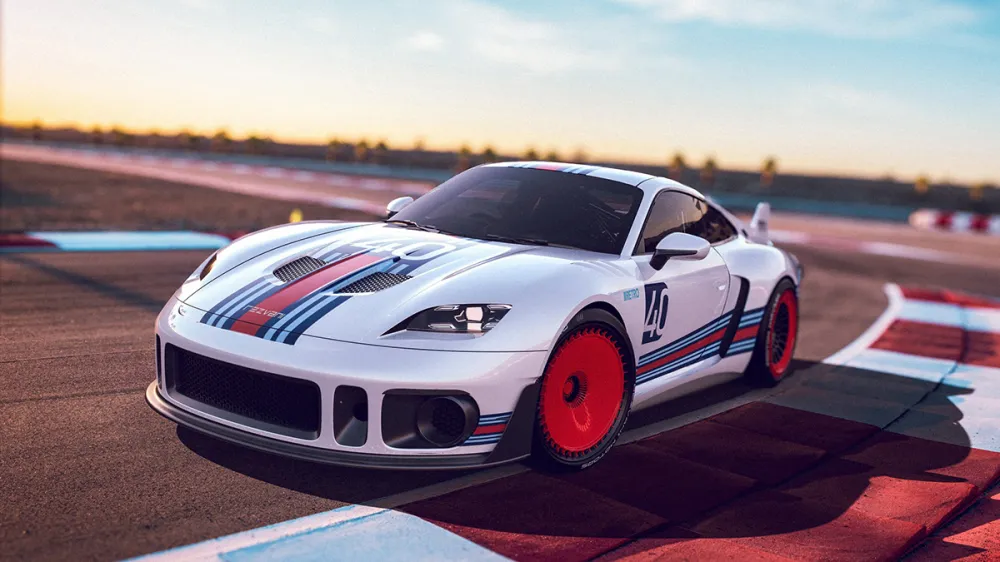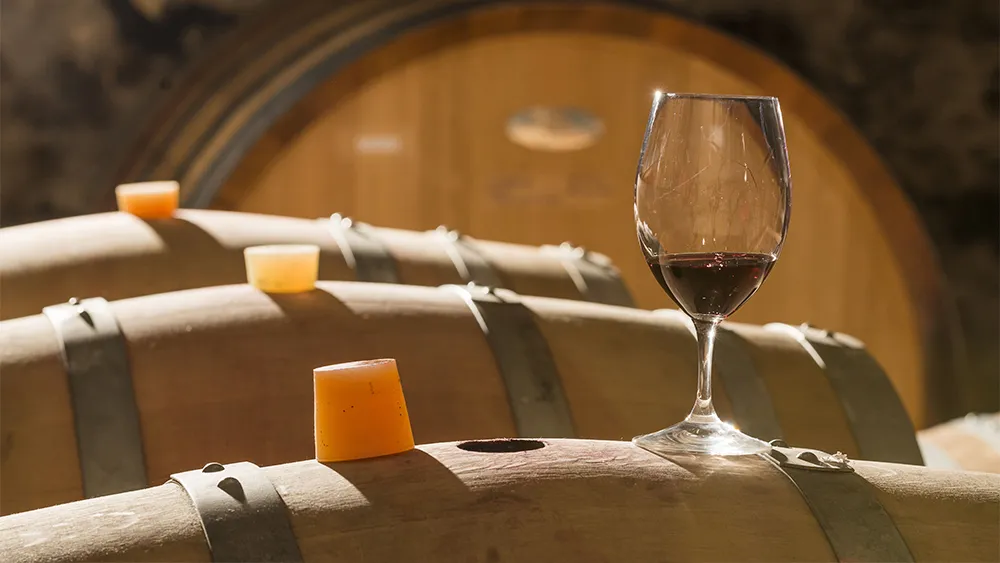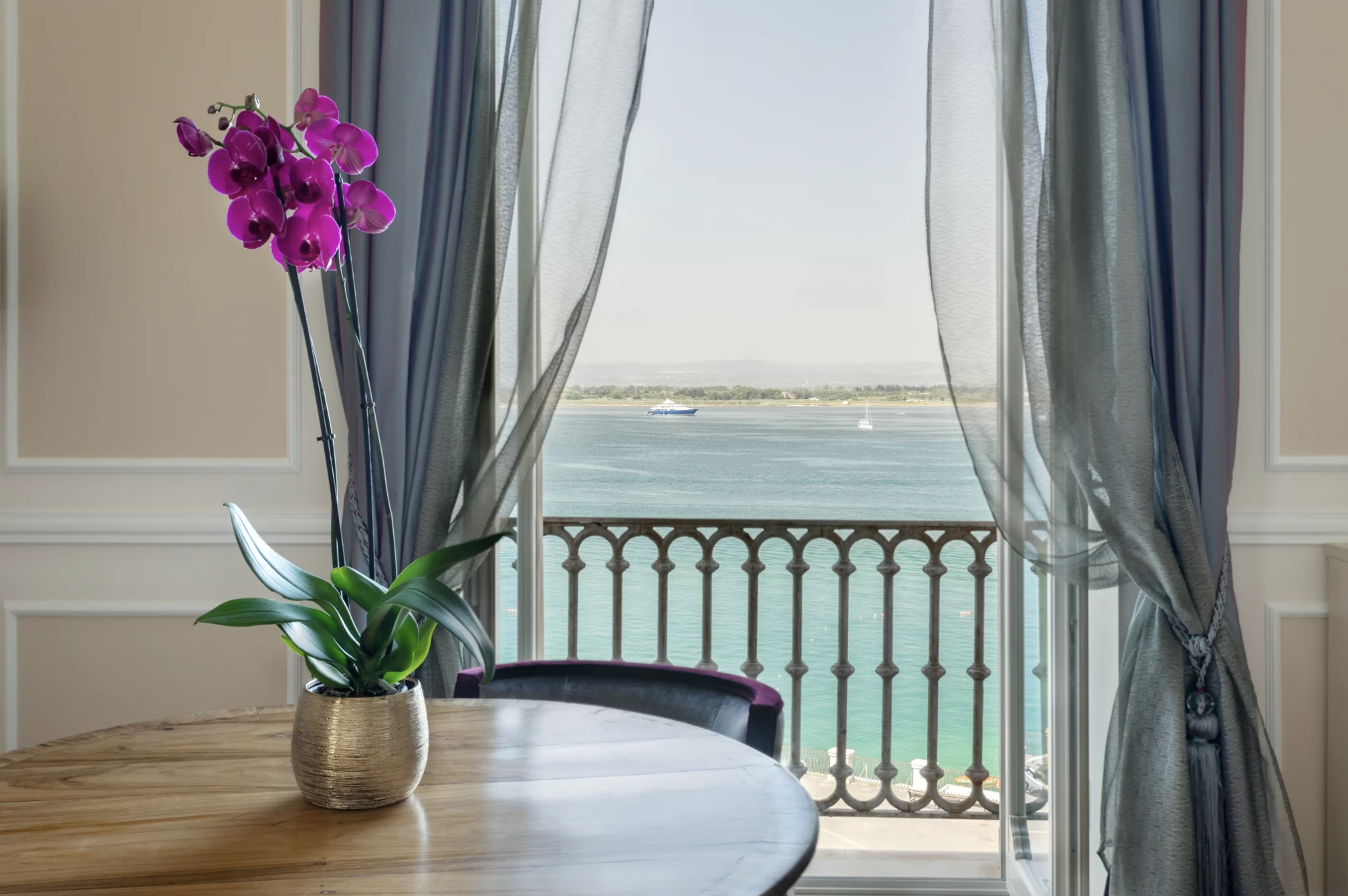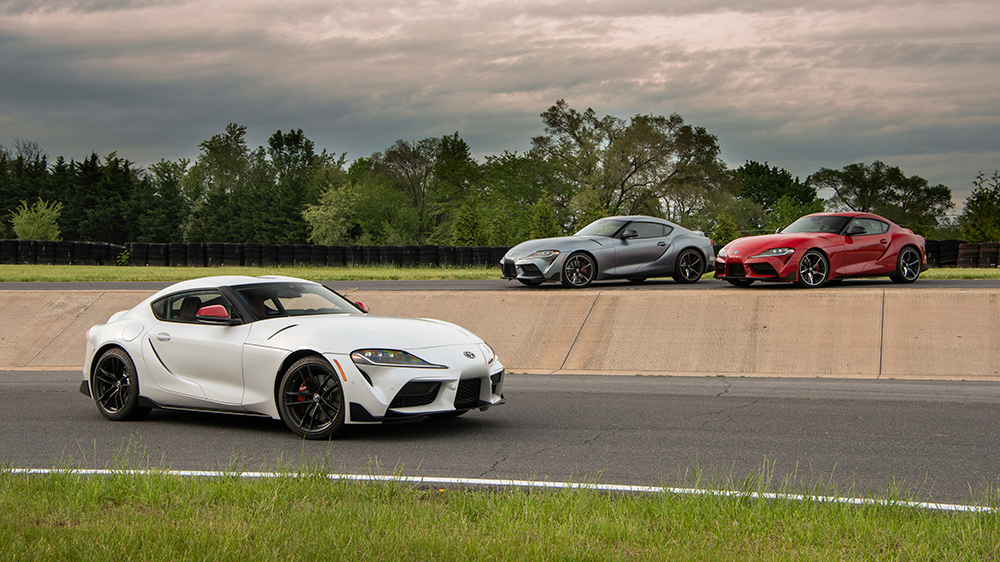
The 2020 Toyota Supra Is an Uncompromising Tour de Force
With its engine and suspension developed in partnership with BMW, the sporty coupe catapults up our list of favourites.
Related articles
Buying a Toyota Supra has been an expensive proposition as of late. With early, pristine editions of the Mark IV Supra Turbo crossing auction blocks for $173,600 (around $252,075 AUD) or selling for $121,000 (around $175,000 AUD) on Bring a Trailer, demand for the Fast and The Furious poster child is at an all-time high. Which is why there was a groundswell of interest when Toyota debuted its 2020 GR Supra at the 2018 Detroit Auto Show, immediately followed by dissent from diehard enthusiasts.
The reason for ire? To produce what will ultimately be a low-volume vehicle, Toyota skipped pouring millions of dollars into research and development and instead tapped BMW to help create the engine and suspension. But are the haters right? Is the new Supra just a Z4 M40i in Toyota drag? After spending hours behind the wheel, lapping at Summit Point Motorsports Park, my answer is crystalline: No.

The 2020 Toyota GR Supra.
Photo: Courtesy of Toyota.
All arguments about Toyota diving deep into Munich’s parts bin are drowned away by the Michelin Pilot Super Sports tires screaming a glorious song as the Supra slashes its way around the 20 tight turns of the undulating and technical Shenandoah Circuit. Propelling the coupe is a single twin-scroll turbocharged inline-six, the same beating heart of the M340i and the Z4 M40i. Here, it’s tweaked to offer 250kW and 495Nm torque, which arrives in full gallop at an incredibly low 1600rpm. There’s no manual transmission (a proper shame) but the ZF automatic 8-speed does a perfectly acceptable job of helping you scramble from zero to 100km/h in 4.1 seconds.
At the rear, an electronically actuated, clutch-style limited-slip differential shuffles power back and forth in less than a fraction of a second, keeping you firing forward with little wheel spin. An adaptive suspension comes standard, and with the perfect 50:50 weight distribution, all of this works in concert to keep the 1540kg car planted no matter how hard you’re pushing it. And it’s a vehicle that enjoys exploring the limits.

The Supra surges from zero to 100km/h in 4.1 seconds.
Photo: Courtesy of Toyota.
If you happen to be above 6 feet tall, as I am, you’ll find wedging yourself into the leather sport bucket seats—while wearing a racing helmet—a bit of a struggle, but once in there, the snug interior is spacious enough for serious track work. The padding that your right knee will rest on exists only because Toyota’s boss asked for more comfort there after repeated track sessions, and it ultimately proves to be a welcome addition. The collaboration with BMW is further evidenced with the interior and switchgear, which are all transplants from the German marque.
The Supra’s turn ins are sharp and immediate, and the Sport setting gives you an unflinchingly firm feel as you start to rotate the car. It pirouettes nicely if you’re driving a clean line, and you’re able to just hear a hint of squeal from the Michelins as you fire out from the apex onto the curbing. There’s no body roll, even at some ridiculous yaw angles, thanks to electronically adaptive gas shocks. It just flings in, when and where you want it to. The Brembo stoppers chomp down hard, especially at the end of spirited runs down the long back straight, when the speedometer can display 200km/h if you’re really on it. There’s no drama when you dive deep, even though there’s just a floating single piston employed in the rear. The confidence gives you freedom to brake later, and the nimbleness of the chassis means you can correct mistakes mid-corner, should you come in a little hot.

The car’s interior and switchgear reflect BMW’s collaboration.
Photo: Courtesy of Toyota.
One of the Supra’s chief test drivers, Dutch racer Herwig Daenens, will tell you it was designed to be throttle-steered, demonstrating by overcooking a tight hairpin in the middle of the 3.5-kilometre circuit. With the car unsettled, a quick lift off the gas helps the weight shoot forward, the front tires bite and his right foot sinks again to plant the car and careen us around. “It’s that easy,” he shouts as we zip towards the next apex.
You don’t have to have a racing pedigree like Daenens to drive the Supra as deftly as he does. A giant chunk of what makes the Supra fun is its approachability. A fun chicane a few turns after the back straight is the ideal place to play with the sport traction mode, which lets you understeer in before snapping the gas to initiate a fun oversteer. Add some wheel and you’re able to slide around the three-corner exchange with laughable ease. Rinse and repeat and you’ll find the Supra’s predictability only heightens the experience.

Intimidating looks, approachable handling.
Photo: Courtesy of Toyota.
Before you chalk the GR Supra’s impeccable track manners up to the BMW components, realize that BMW merely handed over the pieces then stepped back. Supra chief engineer Tetsuya Tada shared a story over dinner about how it was up to Toyota to make everything harmonious; that Toyota and BMW never even compared notes during the five years of development. Tada doesn’t think you should compare his progeny to the Z4; he’d prefer you benchmark it against what he did: the Porsche 718 Cayman. And the sum of Tada’s efforts do represent a serious shot across the Cayman’s bow.
Tada acknowledges that enthusiasts will want to impart their own final flourishes to make the Supra more powerful and so has left room for further tinkering. The engine can handle plenty more boost, so power upgrades will abound. Some of the aero vents in the front are removable plastic inserts, to further help cool the brakes and engine if so desired. I’m sure it won’t be long after the first 1500 Launch Editions are delivered that we’ll see a new Supra with 500 horses under the hood.

The coupe carries a 250kW, turbocharged inline-six with 495Nm torque.
Photo: Courtesy of Toyota.
There are minor quibbles, like wishing the steering wheel diameter was smaller, and that it telescoped towards the driver more. Overall, however, you’re left with a German car with a Japanese soul, and that’s a wonderful thing to experience. But the question then becomes how many will? Press Toyota on anticipated sales volume, and you’re issued the party line: “We’re focusing on the first 1500 cars.” Those Launch Editions, demarcated from the 3.0 Premium editions by red mirror caps, a red leather interior, and black wheels, will go quickly, especially given the low price of $55,250 US or $80,000 AUD directly converted. (The base 3.0 Supra will sell for $49,990 US, while the 3.0 Premium edition will fetch $53,990 US with no indication from Toyota Australia regarding local pricing.)
Given the market for low-mileage Mark IVs, it wouldn’t be surprising if a number of the Launch Editions were bought and garaged, much like the first new Supra, which went for $2.1 million (around $3 million AUD) at a Barrett-Jackson auction back in January. Toyota claims to have amassed more than 40,000 “hand-raisers” after launching an informational campaign about the Supra, but everyone would be surprised if more than 10,000 units sold. Does that mean we’ll see some barely-driven examples crossing auction blocks in twenty years? Probably. But while some wait for their investment to appreciate, others will be out, pushing their Supras to the maximum, fully appreciating the car in the moment.
Subscribe to the Newsletter
Recommended for you
8 Fascinating Facts You Didn’t Know About Aston Martin
The British sports car company is most famous as the vehicle of choice for James Bond, but Aston Martin has an interesting history beyond 007.
May 1, 2024
Rezvani Will Rebuild Your 911 to Go From Zero to 100 in Two Seconds
The shop will build a version of the RR1 based on the Carrera S, GT3, and Turbo S
By Bryan Hood
April 23, 2024
You may also like.
You may also like.
Minerality in Wine, Explained: How It Affects Taste, Aroma and Texture
And an exploration of the regions that produce great mineral-driven varietals.
If you have taken part in a wine tasting, read an article about wine, or even glanced at the back label of a bottle of wine, you have likely encountered the word minerality. But defining what that means exactly is where the problems can start—even wine experts disagree on what it is and how it expresses itself in the glass.
Minerality refers to a flavour profile and often a palpable sensation in the mouth. The flavours generally involve rocks or fossils, such as stone, river rock, flint, gravel, slate, asphalt and oyster shell. There is also a sense of salinity, often derived from volcanic soils, that is a component of mineral-driven wines. This is different from other earthy flavours such as forest floor or peat. When we host tastings, very few people will own up to having licked rocks as a child, but almost everyone has gotten a stray bit of oyster or clam shell in their mouth and can recall the taste and texture. Most of us can remember the scent of a chalkboard or pencil lead from our childhood, and even those who have never fired a gun are familiar with flint or gunpowder from firecrackers.
When minerality is discussed, it is often a quality ascribed to white wine such as Riesling, Assyrtiko, Sauvignon Blanc or Burgundian Chardonnay. We may not hear about minerality in red wine so much because the oak used for maturation may mask the flavours and aromas associated with minerality. However, two reds sometimes described as having mineral qualities are those from the volcanic soils of Mount Etna in Sicily and the shale and quartz vineyards of Priorat in Spain. A prime example of the mineral-driven style is Chablis in the northernmost reaches of Burgundy, whose wines are made with 100 percent Chardonnay. The wines have a distinctly different character than the oaky, buttery style prevalent in Napa Valley and further south in Burgundy.
Walking through the vineyards of Chablis you can see abundant fossilised oyster shells that date back 150 million years to the Upper Jurassic period, when this area was at the bottom of the sea. Dig a bit; you will find calcified ammonites and spiral-shaped cephalopods from the same era. While vineyard soil is a discussion for another day, the grey limestone here is called Kimmeridgian, named for the village of Kimmeridge in Dorset, England, where it was first identified. As Thierry Bellicaud, president of Domaine Laroche in Chablis told Robb Report, “The Kimmeridgian limestone soil, which is unique to this area, delivers all needed nutrients for the balance of the vines. The terroir nurtures the vines which then express its personality in the grapes.”
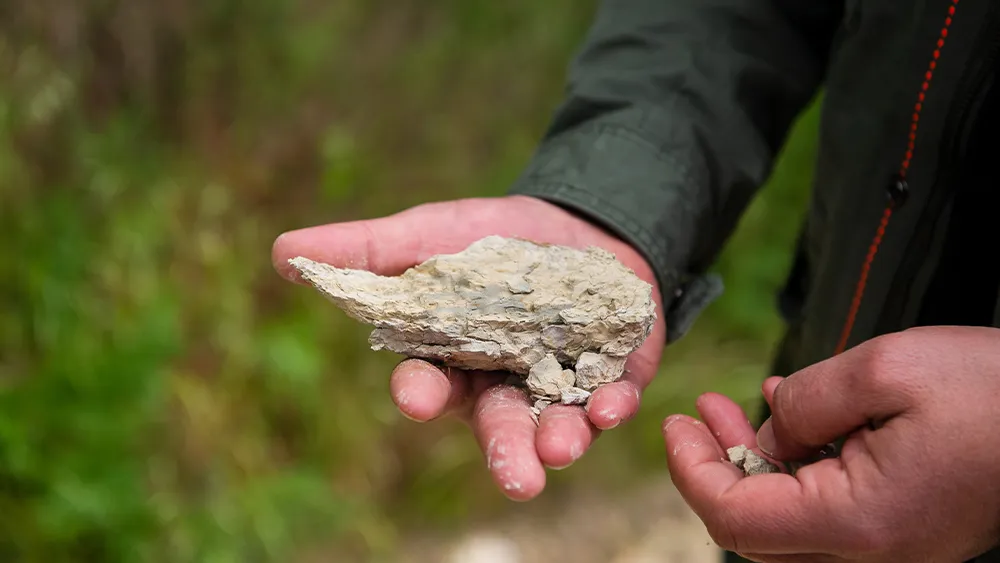
DOMAINE LAROCHE, CHABLIS, FRANCE
Asked how soil composition influences one of Domaine Laroche’s wines, Bellicaud referenced its Chablis Grand Cru Les Blanchots, “Les Blanchots is a unique terroir made of a layer of white clay on Kimmeridgian limestone with ammonites. This is the ideal combination to keep the right amount of water for the roots. The southeast exposure allows slow ripening and favours aroma development. It is one of the areas in the appellation where you can easily find oyster fossils (called Exogyra virgula). The Grand Cru Les Blanchots is delicate, refined and silky in texture.”
Assyrtiko from Santorini is almost always described as possessing a mineral quality as well as a touch of salinity, which can be attributed to the black volcanic soil in which it grows as well as to the Aegean Seaspray that wafts over the island’s vineyards. Mosel Valley Riesling’s leanness and flinty character come from the red and blue limestone in which it is cultivated.
Italy’s Soave region is also known for the minerality of its wine. Alessio Inama, third-generation family leader and director of sales, marketing and communication at Inama Azienda Agricola, told Robb Report, “Soave Classico is a volcanic region with soil made up of basaltic rocks, volcanic tuffs and ashes that date back 30 million years. The soils offer minerals in their natural form, which impact the composition of the plants themselves. In the case of grape vines, the soils have a major influence on the resulting flavours of the wines, which are mineral and floral.”
Known for their scrupulous mapping of micro-plots within their vineyards, the Inamas produce several different Soave wines made with the Garganega grape. Inama I Palchi Foscarino Grande Cuvée Soave DOC is crafted from the family’s best plots on Monte Foscarino. Inama explained, “The soil of Foscarino is a mix of pure magma, ashes and basaltic rocks that deteriorated over millions of years into a dark clay that is extremely rich in minerals. The grapes from those 40-year-old vines have strong personality, great intensity and texture, delivering a complex bouquet of white flowers, citrus notes and flinty sensations.”
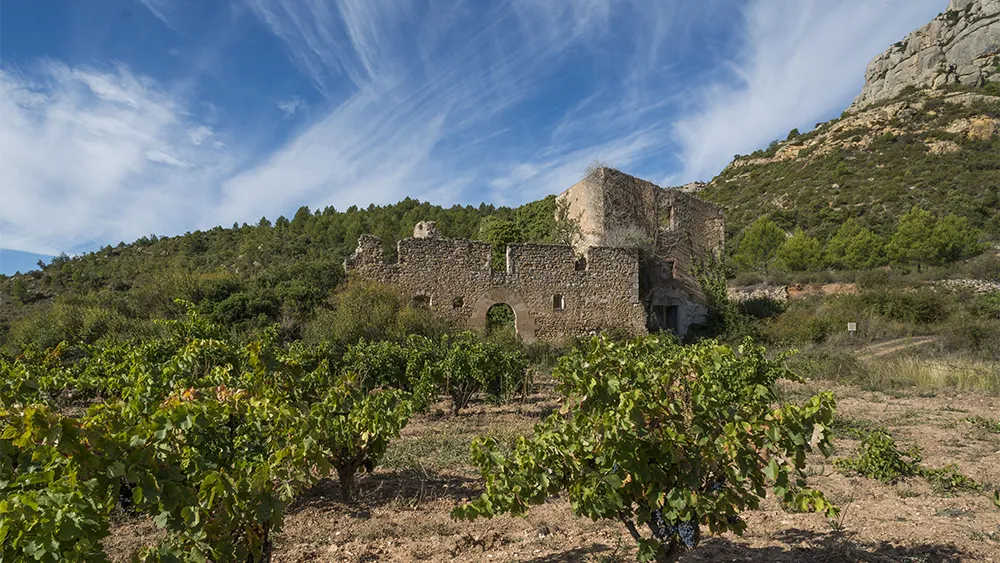
SCALA DEI, PRIORAT, SPAIN
While the sensation of minerality can be less obvious in red wines, Spanish Garnacha and Sicilian Nerello Mascalese are two grapes that often exhibit it, thanks to both the locales from which they hail as well as the often-judicious use of oak. The slopes of eastern Sicily’s Mount Etna are covered with volcanic soils composed of pumice, black ash and basalt. Priorat, a region close to Barcelona in northeast Spain, is blessed with black quartz, slate and mica soils called llicorella. Here you will find vineyards covered with small fragments of black and grey striated rock sitting atop blue and red soils embedded with the same.
Ricard Rofes, winemaker at Scala Dei in Priorat, refers to its Mas Deu vineyard as one of the winery’s “jewels.” The origin of Scala Dei Tribut and Masdeu, it sits 800 meters (2,625 feet) above sea level. Rofes told Robb Report, “In this elevated area the clay and limestone soils are ideal for growing Grenache, giving the wine that touch of acidity and freshness that makes it unique. The red-clay soils and the altitude of the vineyards located in the lap of the Sierra de Montsant give it freshness and the llicorella soils impart a genuine imprint. Our wine is the pure expression of the fruit and the terroir with a distinct personality.”
You may also like.
Best fo Europe: Six Senses, Switzerland
Mend in the mountains at Crans-Montana.
Wellness pioneer Six Senses made a name for itself with tranquil, mostly tropical destinations. Now, its first alpine hotel recreates that signature mix of sustainable luxury and innovative spa therapeutics in a world-class ski setting.
The ski-in, ski-out location above the gondola of one of Switzerland’s largest winter sports resorts allows guests to schuss from the top of the Plaine Morte glacier to the hotel’s piste-side lounge, where they can swap ski gear for slippers, then head straight to the spa’s bio-hack recovery area to recharge with compression boots, binaural beats and an herb-spiked mocktail. In summer, the region is a golf and hiking hub.
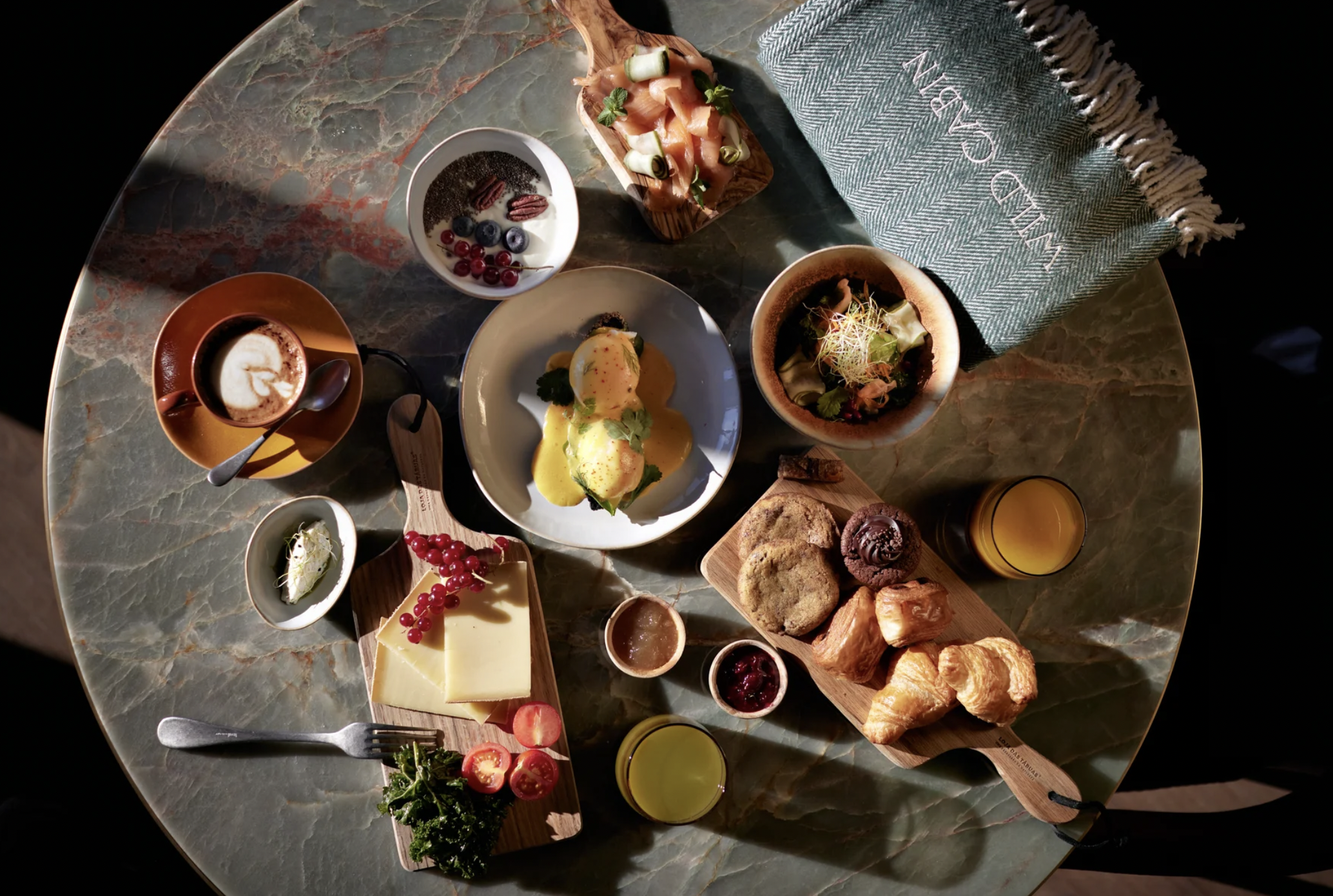
The vibe offers a contemporary take on chalet style. The 78 rooms and suites are decorated in local larch and oak, and all have terraces or balconies with alpine views over the likes of the Matterhorn and Mont Blanc. With four different saunas, a sensory flotation pod, two pools
and a whimsical relaxation area complete with 15,000 hanging “icicles” and views of a birch forest, the spa at Six Senses Crans-Montana makes après ski an afterthought.
You can even sidestep the cheese-heavy cuisine of this region in favour of hot pots and sushi at the property’s Japanese restaurant, Byakko. Doubles from around $1,205; Sixsenses.com
You may also like.
Watch of the Week: TAG Heuer Formula 1 | Kith
The legendary sports watch returns, but with an unexpected twist.
Over the last few years, watch pundits have predicted the return of the eccentric TAG Heuer Formula 1, in some shape or form. It was all but confirmed when TAG Heuer’s heritage director, Nicholas Biebuyck, teased a slew of vintage models on his Instagram account in the aftermath of last year’s Watches & Wonders 2023 in Geneva. And when speaking with Frédéric Arnault at last year’s trade fair, the former CEO asked me directly if the brand were to relaunch its legacy Formula 1 collection, loved by collectors globally, how should they go about it?
My answer to the baited entreaty definitely didn’t mention a collaboration with Ronnie Fieg of Kith, one of the world’s biggest streetwear fashion labels. Still, here we are: the TAG Heuer Formula 1 is officially back and as colourful as ever.
As the watch industry enters its hype era—in recent years, we’ve seen MoonSwatches, Scuba Fifty Fathoms, and John Mayer G-Shocks—the new Formula 1 x Kith collaboration might be the coolest yet.

Here’s the lowdown: overnight, TAG Heuer, together with Kith, took to socials to unveil a special, limited-edition collection of Formula 1 timepieces, inspired by the original collection from the 1980s. There are 10 new watches, all limited, with some designed on a stainless steel bracelet and some on an upgraded rubber strap; both options nod to the originals.
Seven are exclusive to Kith and its global stores (New York, Los Angeles, Miami, Hawaii, Tokyo, Toronto, and Paris, to be specific), and are made in an abundance of colours. Two are exclusive to TAG Heuer; and one is “shared” between TAG Heuer and Kith—this is a highlight of the collection, in our opinion. A faithful play on the original composite quartz watch from 1986, this model, limited to just 1,350 pieces globally, features the classic black bezel with red accents, a stainless steel bracelet, and that creamy eggshell dial, in all of its vintage-inspired glory. There’s no doubt that this particular model will present as pure nostalgia for those old enough to remember when the original TAG Heuer Formula 1 made its debut.

Of course, throughout the collection, Fieg’s design cues are punctuated: the “TAG” is replaced with “Kith,” forming a contentious new brand name for this specific release, as well as Kith’s slogan, “Just Us.”
Collectors and purists alike will appreciate the dedication to the original Formula 1 collection: features like the 35mm Arnite cases—sourced from the original 80s-era supplier—the form hour hand, a triangle with a dot inside at 12 o’clock, indices that alternate every quarter between shields and dots, and a contrasting minuterie, are all welcomed design specs that make this collaboration so great.
Every TAG Heuer Formula 1 | Kith timepiece will be presented in an eye-catching box that complements the fun and colour theme of Formula 1 but drives home the premium status of this collaboration. On that note, at $2,200 a piece, this isn’t exactly an approachable quartz watch but reflects the exclusive nature of Fieg’s Kith brand and the pieces he designs (largely limited-edition).

So, what do we think? It’s important not to understate the significance of the arrival of the TAG Heuer Formula 1 in 1986, in what would prove integral in setting up the brand for success throughout the 90’s—it was the very first watch collection to have “TAG Heuer” branding, after all—but also in helping to establish a new generation of watch consumer. Like Fieg, many millennial enthusiasts will recall their sentimental ties with the Formula 1, often their first timepiece in their horological journey.
This is as faithful of a reissue as we’ll get from TAG Heuer right now, and budding watch fans should be pleased with the result. To TAG Heuer’s credit, a great deal of research has gone into perfecting and replicating this iconic collection’s proportions, materials, and aesthetic for the modern-day consumer. Sure, it would have been nice to see a full lume dial, a distinguishing feature on some of the original pieces—why this wasn’t done is lost on me—and perhaps a more approachable price point, but there’s no doubt these will become an instant hit in the days to come.
—
The TAG Heuer Formula 1 | Kith collection will be available on Friday, May 3rd, exclusively in-store at select TAG Heuer and Kith locations in Miami, and available starting Monday, May 6th, at select TAG Heuer boutiques, all Kith shops, and online at Kith.com. To see the full collection, visit tagheuer.com
You may also like.
Best of Europe: Grand Hotel Des Étrangers
Fall for a Baroque beauty in Syracuse, Italy.
Sicily has seen a White Lotus–fuelled surge in bookings for this summer—a pop-culture fillip to fill up its grandes dames hotels. Skip the gawping crowds at the headline-grabbers, though, and opt instead for an insider-ish alternative: the Grand Hotel des Étrangers, which reopened last summer after a gut renovation.
It sits on the seafront on the tiny island of Ortigia in Syracuse, all cobbled streets and grand buildings, like a Baroque time capsule on Sicily’s southeastern coast.
Survey the entire streetscape here from the all-day rooftop bar-restaurant, Clou, where the fusion menu is a shorthand of Sicily’s pan-Mediterranean history; try the spaghetti with bottarga and wild fennel or the sea bass crusted in anchovies. Idle on the terrace alfresco with a snifter of avola, the rum made nearby.
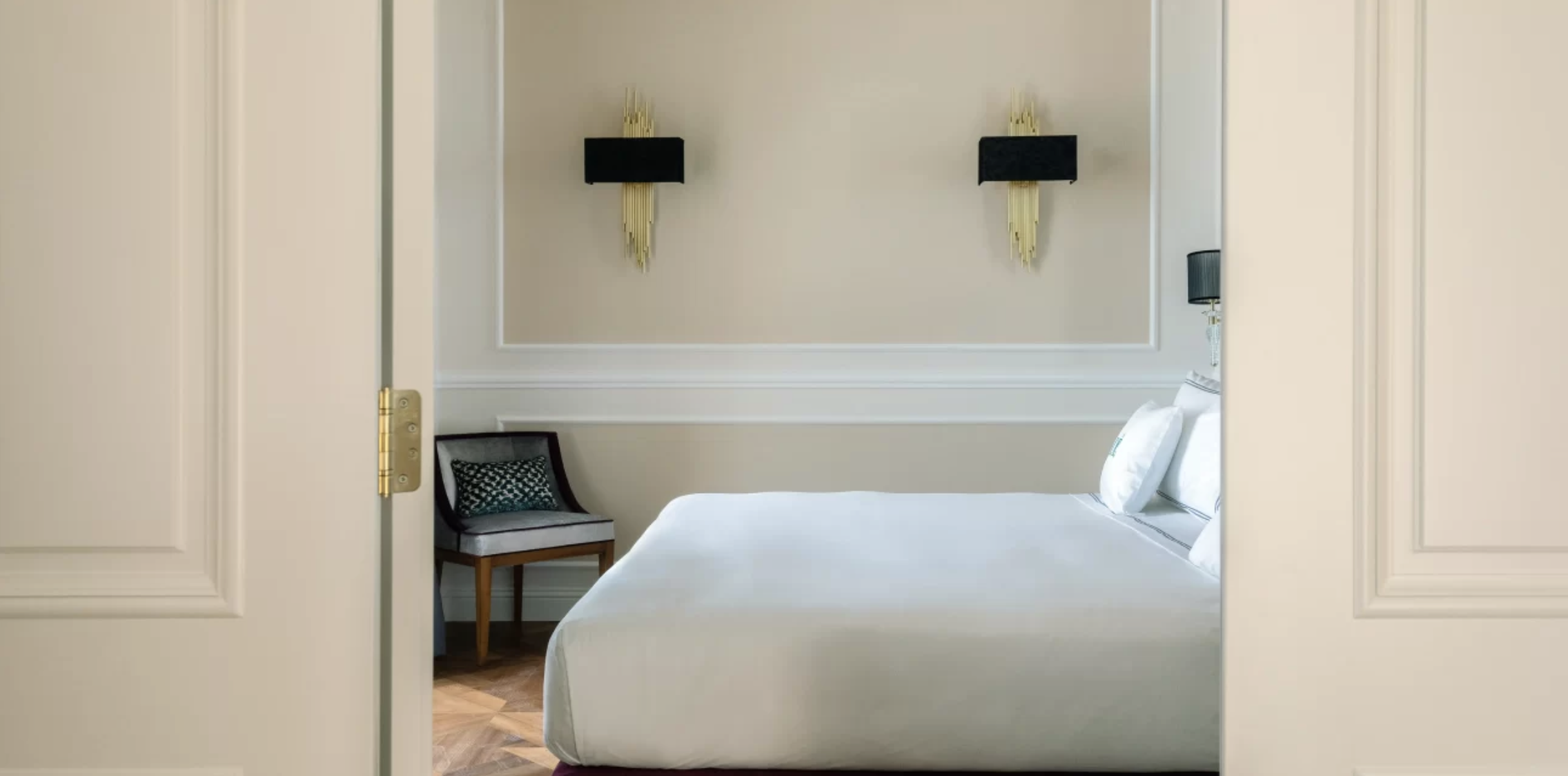
As for the rooms, they’ve been renovated with Art Deco–inflected interiors—think plenty of parquet and marble—but the main asset is their aspect: the best of them have private balconies and a palm tree-fringed view out over the Ionian Sea. Doubles from around $665; desetranger.com
You may also like.
8 Fascinating Facts You Didn’t Know About Aston Martin
The British sports car company is most famous as the vehicle of choice for James Bond, but Aston Martin has an interesting history beyond 007.
Aston Martin will forever be associated with James Bond, ever since everyone’s favourite spy took delivery of his signature silver DB5 in the 1964 film Goldfinger. But there’s a lot more to the history of this famed British sports car brand beyond its association with the fictional British Secret Service agent.
Let’s dive into the long and colourful history of Aston Martin.







